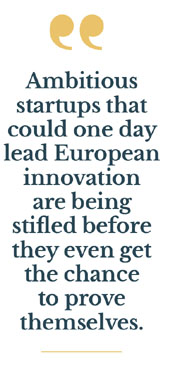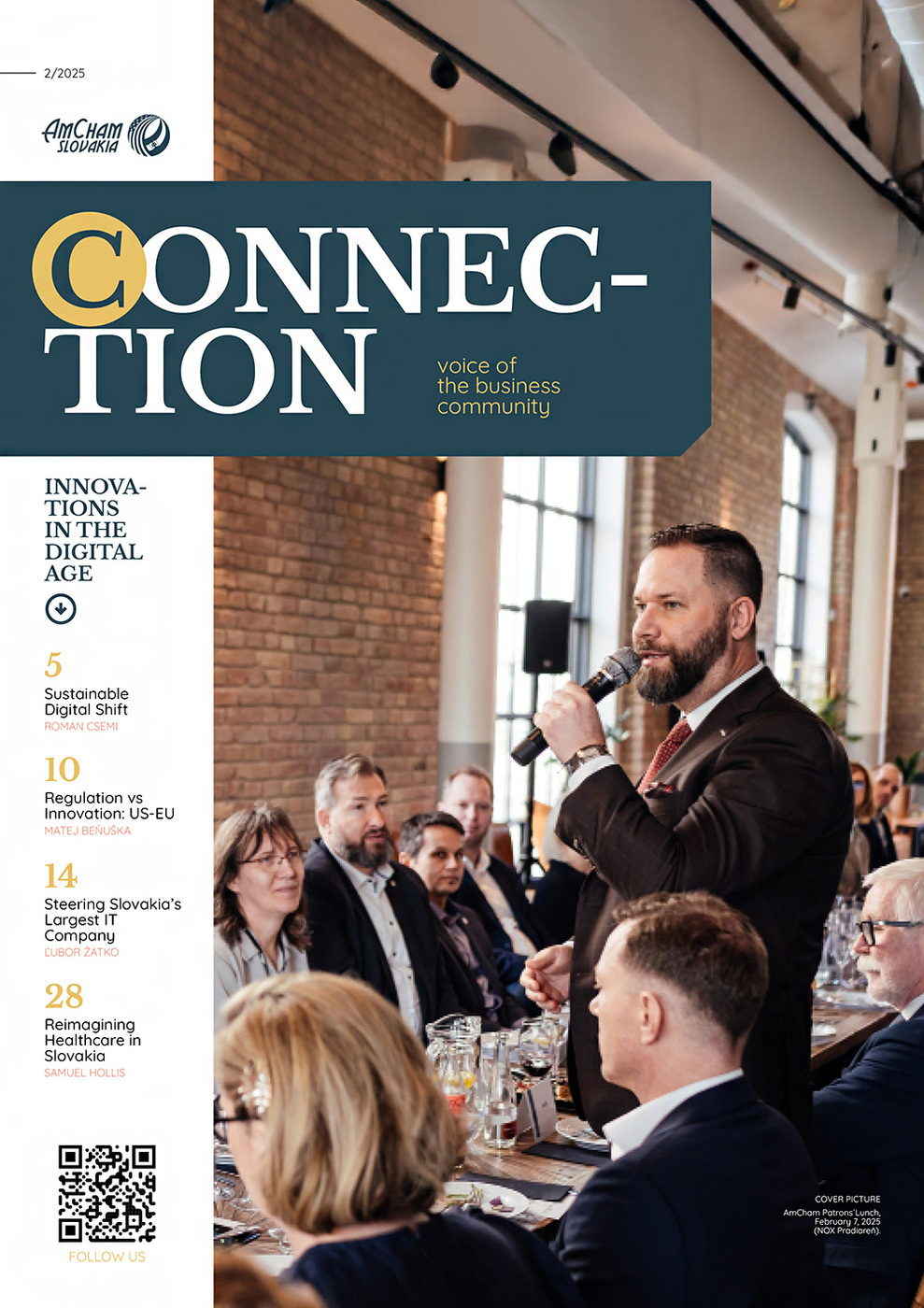But as the world accelerates toward a more digital future, these two powerhouses are moving in different directions, leaving European businesses—especially small and medium-sized enterprises—struggling to keep pace. Slovakia, a country bursting with untapped potential in the tech sector, stands particularly vulnerable to these shifts.
The United States has long been a champion of innovation, fostering a climate where technology thrives through market-driven policies. In America, ambition is met with opportunity, and bold ideas have the chance to flourish with minimal interference. This is why Silicon Valley became the epicenter of the digital revolution, why artificial intelligence (AI) is evolving at breakneck speed, and why American companies continue to lead global advancements in everything from AI to cybersecurity. Meanwhile, Asia is rapidly emerging as a formidable competitor, with nations like China and South Korea heavily investing in AI, semiconductor technology, and digital infrastructure. The region’s blend of government-backed initiatives and aggressive private-sector growth is positioning it as a serious contender in the global tech race, further intensifying the pressure on Europe to keep pace.
Europe, however, has taken a different path. The EU has placed its bets on regulation, prioritizing consumer protection, fair competition, and digital sovereignty. On paper, this sounds noble. The Digital Markets Act and the Digital Services Act aim to curb monopolistic behavior and ensure a fair playing field. The AI Act seeks to rein in the potential dangers of AI before they spiral out of control. The NIS2 Directive mandates stricter cybersecurity measures. And, of course, GDPR remains a gold standard for data protection. Each of these policies is well-intentioned, but together, they create an environment where innovation is bogged down by red tape and bureaucracy.
For SMEs, this is not just an inconvenience—it is an existential crisis. Unlike tech giants with vast legal teams and endless resources, small businesses simply cannot afford to navigate the regulatory labyrinth. They are forced to either divert precious time and money to compliance or risk falling behind in an increasingly competitive world. In Slovakia, where SMEs form the backbone of the economy, the weight of these policies is especially suffocating. Data from the European Commission indicates that SMEs in Slovakia represent 99.9% of all enterprises, constituting 70.7% of jobs and contributing 61.2% of value added in the economy. This underscores their critical role and highlights the immense pressure they face due to regulatory constraints. Ambitious startups that could one day lead European innovation are being stifled before they even get the chance to prove themselves. The widening gulf between the US and EU is perhaps most visible in AI. A recent article in The Economist highlights how the European AI market is lagging behind due to stringent regulations, while the US and China continue to push the boundaries of innovation. Similarly, Politico has reported that European startups are finding it increasingly difficult to compete globally as compliance costs skyrocket, making it harder to attract investors and scale operations. In America, AI is being embraced as the next great frontier, with companies pushing boundaries, testing limits, and redefining what is possible. In Europe, the cautious approach means companies are forced to move slowly, waiting for the regulatory dust to settle before they can truly innovate. The result? A continent that once led the world in scientific and technological revolutions is now playing catch-up, watching from the sidelines as others shape the future.
The widening gulf between the US and EU is perhaps most visible in AI. A recent article in The Economist highlights how the European AI market is lagging behind due to stringent regulations, while the US and China continue to push the boundaries of innovation. Similarly, Politico has reported that European startups are finding it increasingly difficult to compete globally as compliance costs skyrocket, making it harder to attract investors and scale operations. In America, AI is being embraced as the next great frontier, with companies pushing boundaries, testing limits, and redefining what is possible. In Europe, the cautious approach means companies are forced to move slowly, waiting for the regulatory dust to settle before they can truly innovate. The result? A continent that once led the world in scientific and technological revolutions is now playing catch-up, watching from the sidelines as others shape the future.
This divide is not just about policies—it is about mindsets. A study, ‘Does EU Regulation Hinder or Stimulate Innovation?’ by Jacques Pelkmans and Andrea Renda, published by the Centre for European Policy Studies (CEPS), provides an in-depth analysis of how European regulations impact innovation. The study argues that while regulation is necessary, the current EU framework may be overly restrictive, limiting the ability of firms—particularly SMEs—to compete on the global stage. Additionally, the European Parliamentary Research Service (EPRS) has explored the effects of GDPR on AI development in its report, ‘The Impact of the General Data Protection Regulation (GDPR) on AI.’ This study highlights how data protection laws, while well-intentioned, create significant challenges for companies trying to leverage AI-driven solutions within Europe. The findings underscore the need for a more dynamic approach to tech governance in Europe. The US sees technology as an opportunity, while the EU views it as a potential threat. This fundamental difference in perspective means that while American companies are scaling new heights, European firms are weighed down by hesitation. And as this gap widens, Slovakia and other small nations within the EU find themselves caught in the middle, trying to reconcile innovation with regulation, ambition with limitation.
But it does not have to be this way. Europe can find a path forward that protects consumers while still fostering innovation. Instead of imposing one-size-fits-all regulations, policymakers could create frameworks that encourage growth, allowing smaller companies the flexibility they need to compete. Transatlantic collaboration could also help align standards, ensuring that European businesses are not shut out of the global digital economy.
Slovakia has a choice to make. It can push for a smarter, more balanced approach within the EU, one that nurtures innovation rather than stifling it. It can advocate for policies that empower, rather than restrict. And it can remind Europe of what it once was—a leader in innovation, a pioneer of new frontiers, a place where the future was not feared but embraced.
Matej Beňuška, Managing Partner, PA Matters



Follow us